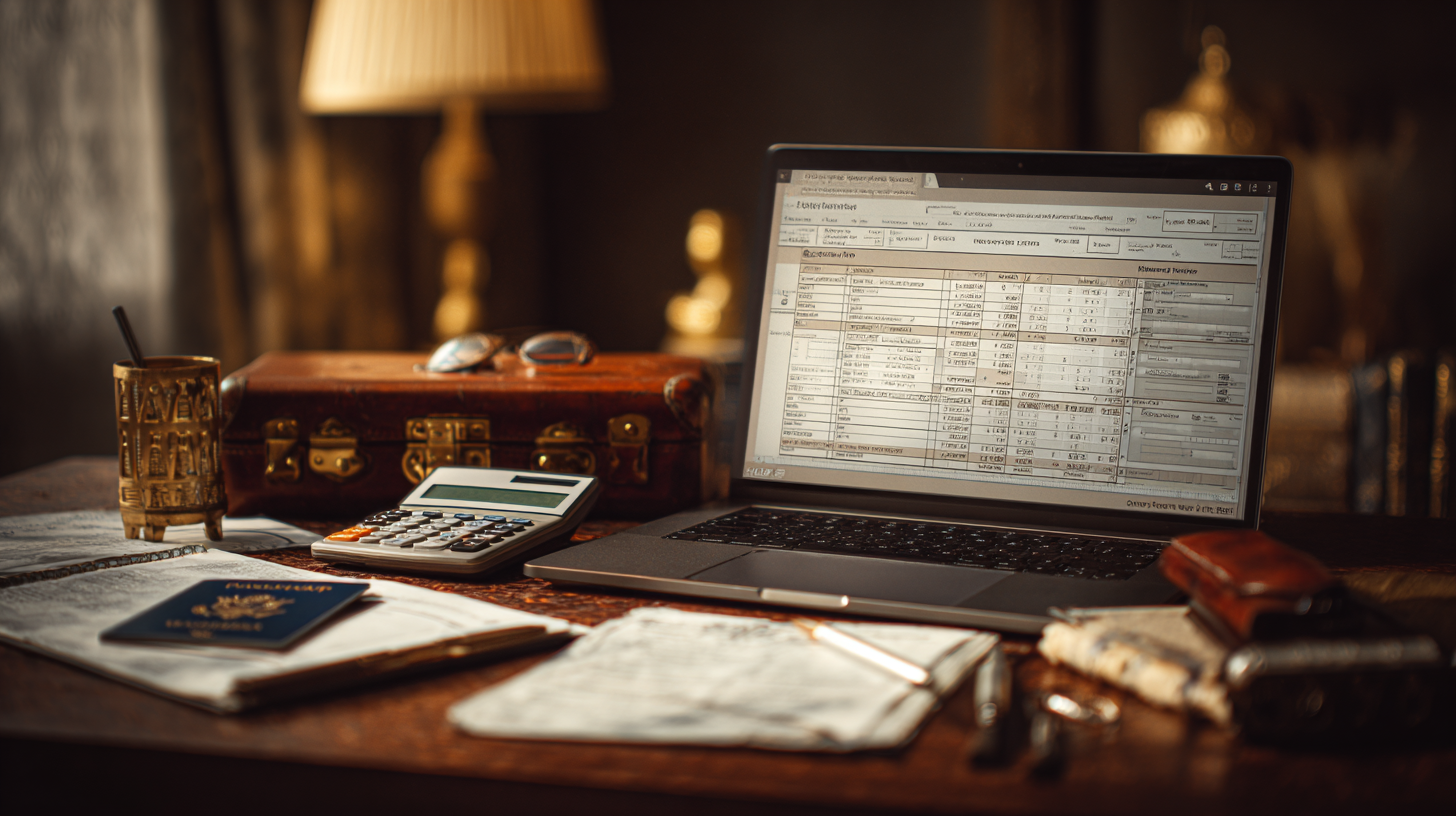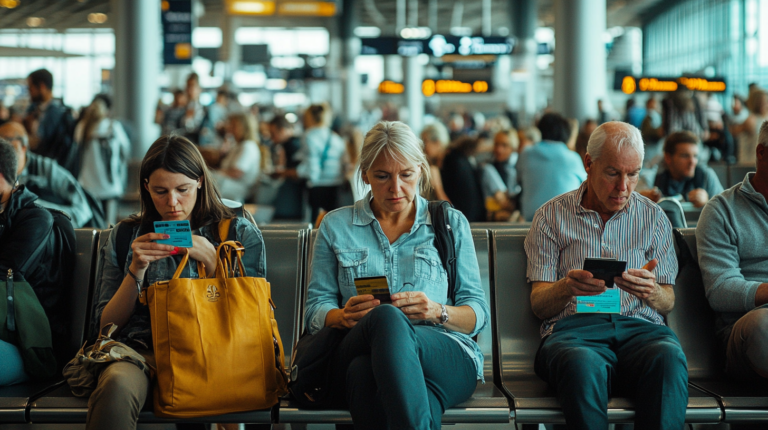Business Travel Budgeting Made Easy
Frequent flyers like me often juggle tight schedules and multiple expenses, making a well-structured business travel budget template essential for saving both time and money. In my own travels, I’ve noticed how quickly airfare, lodging, and meal costs can add up, especially when I’m on back-to-back flights. According to industry data from the Global Business Travel Association, overall corporate travel spending is expected to grow steadily through 2025, underscoring the value of meticulous planning. Implementing a clear, organized budgeting process helps us prevent surprise bills and maintain better financial control on each trip.
What Is a Business Travel Budget Template?

A business travel budget template is essentially a pre-formatted spreadsheet designed to help travelers estimate, track, and compare trip costs against a set spending limit. Most templates segment expenses under categories like airfare, lodging, ground transportation, meals, and incidentals, providing an at-a-glance view of total outlay. This transparency makes it easier to course-correct if I see that my spending is creeping over the planned budget.
In my experience, having a dedicated template means fewer headaches when dealing with reimbursement claims or expense reports after returning home. A recent study suggests that businesses utilizing formal budgeting tools for travel experience up to a 30% reduction in overspending. Companies often build these spreadsheets in Excel or Google Sheets to keep everything centralized, incorporate formulas for automated calculations, and allow for quick shareability across teams or departments.
I’ve observed that beyond manual spreadsheets, some travel apps integrate budgeting features directly into their dashboards, tracking real-time trip expenses and flagging them against pre-set thresholds. Whether you prefer high-tech solutions or a simple file, the key is consistency: plan ahead, record diligently, and review thoroughly.
The Top 3 Templates for Frequent Flyers

1. The Wittwer Template: Originally created by Jon and Jim Wittwer, this Excel-based sheet breaks down everything from fuel expenses to lodging. It’s robust enough to handle personal or business trips, updating estimated vs. actual spending in real time. I’ve found it particularly handy for multi-leg journeys where each leg has distinct sets of expenses. According to user feedback, the Wittwer Template’s biggest draw is its precision in forecasting potential overages.
2. TheGoodocs Spreadsheet: This user-friendly option includes pre-set categories for flights, meals, and entertainment, along with formulas that update your total budget automatically. I once used it during a three-day conference trip and appreciated how quickly I could tweak the spreadsheet when plans changed last minute. Personalizing categories is straightforward, allowing you to align the template with corporate policies or personal preferences.
3. The Corporate Travel Budget Template: This one caters to larger companies looking to align costs with corporate travel guidelines. It has dedicated sections for transportation, accommodation, meals, and entertainment. During one trip, I was able to compare projected expenses with actual costs by day, which helped me adjust my spending mid-trip. It also includes a calendar view, making it extremely convenient to see when and where I might be overspending before I get home.
When selecting a template, I recommend considering the nature of your trips. Some are better suited for shorter starters, while others support detailed line-item breakdowns for lengthier excursions. In 2025’s fast-paced business environment, tools that keep you flexible can mean the difference between a stress-free journey and a financial headache.
Why Budgeting Matters for Corporate Travel

Corporate travel often goes hand-in-hand with high-stakes meetings, revenue opportunities, and brand representation. In my own work, the trips I’ve taken to network at conferences or finalize deals have been critical for growth. A solid budget not only ensures I spend responsibly but also allows companies to forecast return on investment—especially if each journey has specific revenue goals tied to it.
Many organizations find that increasing their travel budgets correlates with higher profitability. A tool like a custom Excel sheet or a free online platform helps you track these numbers in detail, so you can pinpoint exactly where adjustments need to be made. A recent white paper from the Travel & Expense Management Council found that companies using structured budgeting methods reported quicker expense reimbursement times—a boon for employees tired of waiting weeks to get paid back.
When I share my expense tracker with the finance department, it strengthens trust. A transparent record of every flight, meal, and cab ride assures them I’m sticking to our agreed-upon plan. It also speeds up the auditing process at year-end, since everything is neatly listed in one place.
How to Use These Templates

Before starting any trip, I do some research on average airfare, lodging rates, and typical daily spending. Then I open or download my chosen spreadsheet, entering these expected costs alongside my total budget. If needed, I unzip downloaded files using standard tools like WinRAR or 7Zip to access the templates, which are often shared in compressed formats.
During the trip—whether I’m flying for business or tacking on extra days for personal exploration—I log each expense in the template right away. This gives me an immediate sense of whether I’m on track or overshooting. If I notice I’m trending over budget, I can proactively reduce non-essential spending or seek alternative lodging to stay within my limits.
I’ve found that keeping each category updated in near real-time drastically reduces the end-of-trip chaos of shuffling through random receipts. Once I’m back, I reconcile everything, identify discrepancies, and fine-tune my approach for the next journey. This process of continuous improvement has saved me hundreds of dollars over the course of a busy travel year.
The Bottom Line

Frequent flyers benefit immensely from well-structured business travel budget templates that reduce the risk of overspending and streamline reimbursement reports. Whether you opt for the Wittwer Template, TheGoodocs Spreadsheet, or a corporate-ready template, these tools ensure you know where every dollar is going.
In addition to staying compliant with company regulations, sticking to a budget template fosters a sense of personal accountability for my own spending. I can then focus on the big picture—meeting clients, sealing deals, and leveraging new opportunities—without worrying about a massive bill. After all, smart budgeting isn’t just about saving money; it’s about traveling smarter and focusing on what truly counts: expanding horizons and making every mile matter.
Final Thoughts

Over the years, I’ve come to realize that a solid travel budget can be the difference between a smooth journey and a tense one. Investing the time to plan before departure can make everything from airport transfers to hotel bookings feel breezy. Plus, consistent tracking helps me spot trends—such as which airlines are increasing fares or what kind of accommodations best fit my budget and preferences.
For all frequent flyers out there, embracing a structured budgeting approach doesn’t just prevent overspending; it also affirms that you’re in control of your own travel narrative. Each template—be it Wittwer’s, TheGoodocs Spreadsheet, or a tailor-made corporate solution—acts like a personal financial checkpoint so you can enjoy the ride without the stress of runaway expenses.
Barry B.’s Take
I’m a firm believer that a great travel budget paves the way for even greater travel stories. By planning for the unexpected, I can make sure that little surprises—like an upgraded seat or a new restaurant discovery—don’t wreck my bottom line.
It’s also about peace of mind. Knowing exactly how much I’m spending at every stage of the journey frees me up to explore, engage in spontaneous side quests, and relish each new destination, confident that I’m well within my means.
Head on over to milesBUZZ for more exclusive insights and fun travel news.







